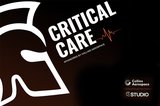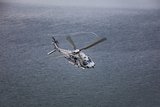AgustaWestland congratulates 2010 Cormorant Trophy winners
AgustaWestland has announced that the crew of "Rescue 912" from Canadian Forces Squadron 103 in Gander, Newfoundland has been selected as the winner of the 2010 Cormorant Trophy for Helicopter Rescue.
The winning search and rescue crew comprising Major Steve Reid of Centreville, Nova Scotia; Captain Priscilla Jobin of Ste-Foy, Quebec; Sergeants Brad Lawrence of Gander, Newfoundland, and Morgan Biderman of Penticton, B.C.; and Sergeant Kent Gulliford of Kamloops, B.C. The award was presented Friday night at the annual SAREX competition in Whitehorse, Yukon by Jeremy Tracy, AgustaWestland Head of Region - Canada and Chief Test Pilot.
The Cormorant Trophy for Helicopter Rescue recognizes the Canadian civilian, government or military crew that has performed the most demanding helicopter rescue of the year.
"This rescue stood as this year's top example of the selfless dedication of the professionals who risk their lives daily for the safety of Canadians and others across Canada and offshore," said Mr. Tracy.
"All of this year's nominees exemplified the bravery and capabilities of the search and rescue community, particularly those invariably flying into the most treacherous weather conditions imaginable, the most inhospitable terrain or seas, dangling from the end of a line hanging from a helicopter or some other physically demanding task that virtually no other Canadian would imagine."
On October 24, 2009, a CH-148 Cormorant helicopter from 103 SAR Squadron (Rescue 912) responded to a Mayday call from the shrimp vessel Seafaring Legend. The distress call indicated that the vessel had taken an unexpected wave at its stern and was rapidly taking on water.
The four-person crew was forced to abandon ship into the open ocean approximately 90 nautical miles (167 km.) north of Fogo Island, Newfoundland. Three of the four people on board were able to don immersion suits and, with great difficulty, eventually climbed into two separate life rafts. The fourth person was unable to don his survival suit before the vessel went down, and tragically, did not survive.
Rescue 912 arrived on scene after flying 130 nautical miles (240 km.) from Gander to the incident location. Upon arrival, the crew of Rescue 912 were faced with never-before-seen circumstances. Every available tool and experience would be required to recover the three survivors from the two life rafts given the tremendous sea state and gale force winds.
As confirmed by the Captain of a nearby Canadian Coast Guard Auxiliary vessel, the waves were averaging six metres, while the displays in the cockpit indicated that the wind speed was sustained at 35 knots with gusts up to 50 knots (93 km/h).
A hoist sequence to a life raft can be very difficult under benign circumstances as the target is neither stationary, nor is it visible from the cockpit making an accurate hover virtually impossible.
On this day, the life rafts were subject to immense swells and significant drift such that the rafts would fall into the troughs and then accelerate both down the front and the backside of each approaching or passing wave. This was an in incredibly difficult scenario which falls well outside the limits the search and rescue community would consider safe for training.
Faced with these conditions, Flight Engineer Sergeant Brad Lawrence experienced great difficulty managing the cable such that the SAR Techs, Sergeants Morgan Biderman and Kent Gulliford, would remain just above the undulating surface as he provided directional voice commands to Major Steve Davis and Captain Priscilla Jobin at the controls of the AW101 helicopter. Not surprisingly, there were a few instances when the SAR Techs were dunked well under water and then catapulted back into the air as the wave passed by.
A concentrated team effort between the cockpit crew, the Flight Engineer in the rescue door (providing voice direction, hover trim control manipulation and hoist cable management) and the SAR Techs on the hook (using hand signals and then swimming with all they were worth while still attached to the cable) resulted in all three survivors being hoisted to safety. They also recovered the body of the fourth crew member.
The other rescues nominated this year were:
1) On October 13, 2009, a helicopter from Canadian Forces 442 Squadron in Comox, B.C., dispatched for a medical evacuation of member of a kayaking group who stranded during bad weather near Bella Coola, B.C. One of the kayakers tried to hike back and was injured when he fell three metres. The mission required the crew to operate in high winds, with deploying almost 50 metres down a hoist cable into a tiny clearing through trees reaching 24 metres into the air on the side of a steep slope with winds gusting into them at 40 km/h .
2) On January 22, 2010, a helicopter was dispatched from 413 Squadron in Greenwood, Nova Scotia to rescue a man stranded on an ice floe near Resolute Bay, Nunavut. The mission involved a 1,800 nautical mile (3,330 km.) transit to the extreme North of Canada in the most challenging environmental conditions one can imagine. Through weather delays, emergency repairs and more, the man was successfully hoisted off the ice and taken to safety.
3) On April 15, 2010, a helicopter owned by VIH Helicopters, under contract to the Canadian Forces during the military's 17-day annual sovereignty exercise in the Arctic called Operation Nunavulit, was pressed into emergency service to rescue an Australian adventurer who had fallen through the thin ice during a solo trek to raise money for charity. The civilian crew and two Canadian Forces search and rescue technicians flew 250 nautical miles (460 km.) further north, successfully located the adventurer from his emergency beacon and flew him to safety.
The Cormorant Trophy is named after the AW101 (former EH101) "Cormorant" medium-heavy lift helicopter used as the Canadian Forces' primary search and rescue helicopter.
Over 190 AW101 helicopters have been built or sold to civil and military customers around the world in a wide variety of configurations. The worldwide fleet had achieved in excess of 200,000 flight hours in Canada, UK, Italy, Denmark, Portugal, and Japan providing exceptional performance and an extremely high degree of safety.
Source: AgustaWestland
More from Defence Helicopter
-
![Germany to send WS-61 Westland Sea King helicopters to Ukraine]()
Germany to send WS-61 Westland Sea King helicopters to Ukraine
Germany has committed to sending Ukraine six of its 21 retiring WS-61 Westland Sea King multirole, amphibious helicopters.
-
![Boeing secures $271 million to advance modernisation of US Special Operations' MH-47G Chinook]()
Boeing secures $271 million to advance modernisation of US Special Operations' MH-47G Chinook
Boeing has clinched a major contract modification to further its backing of the US Special Operations Command’s MH-47G Chinook aircraft modernisation effort.
-
![Dubai Airshow 2023: South Korean homegrown helicopters make international debut]()
Dubai Airshow 2023: South Korean homegrown helicopters make international debut
Two KAI helicopters, the KUH-1E utility helicopter and the Light Attack Helicopter (LAH), have taken centre stage at the Dubai Airshow 2023.
-
![Italian Navy receives final NH90 helicopter]()
Italian Navy receives final NH90 helicopter
The Italian Navy now boasts a fleet of 56 NH90 helicopters comprising 46 SH-90As and 10 MH-90As.
-
![Argentina seeks AW109 and CH-46 Sea Knight helicopters]()
Argentina seeks AW109 and CH-46 Sea Knight helicopters
The Argentinian Air Force (FAA) and the Argentinian Naval Aviation Command (COAN) are looking for options to upgrade their helicopter fleets.
-
![DSEI 2023: Lockheed to produce about 40% of Black Hawks on UK soil if it wins NMH contest]()
DSEI 2023: Lockheed to produce about 40% of Black Hawks on UK soil if it wins NMH contest
Lockheed Martin promises a boost to the British job market and export opportunities, while strengthening ties with Poland and positioning the UK for a future in rotorcraft technology in the event of a New Medium Helicopter competition triumph.


























